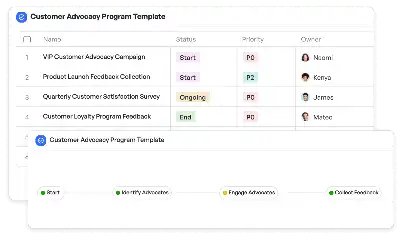Model Compression Technique Evaluation Guide
Achieve project success with the Model Compression Technique Evaluation Guide today!

What is Model Compression Technique Evaluation Guide?
The Model Compression Technique Evaluation Guide is a comprehensive resource designed to help teams and individuals assess the effectiveness of various model compression techniques. Model compression is a critical process in machine learning and AI, aimed at reducing the size of models while maintaining their performance. This guide provides a structured approach to evaluate techniques such as quantization, pruning, and knowledge distillation. By using this guide, teams can ensure that their models are optimized for deployment on resource-constrained devices like mobile phones, IoT devices, and edge computing platforms. The importance of this guide lies in its ability to streamline the evaluation process, saving time and resources while ensuring that the chosen compression techniques meet the specific needs of the application.
Try this template now
Who is this Model Compression Technique Evaluation Guide Template for?
This guide is tailored for data scientists, machine learning engineers, and AI researchers who are involved in developing and deploying machine learning models. It is particularly useful for teams working on applications that require efficient model deployment, such as mobile AI, autonomous vehicles, and real-time systems. Typical roles that benefit from this guide include AI project managers, software engineers focusing on edge computing, and researchers exploring novel compression methods. Whether you are a seasoned professional or a newcomer to the field, this guide provides the tools and insights needed to make informed decisions about model compression techniques.

Try this template now
Why use this Model Compression Technique Evaluation Guide?
The Model Compression Technique Evaluation Guide addresses several pain points in the field of AI and machine learning. One common challenge is the trade-off between model size and performance. This guide helps users systematically evaluate compression techniques to find the optimal balance. Another issue is the lack of standardized evaluation metrics, which can lead to inconsistent results. The guide provides a clear framework for defining and using metrics, ensuring comparability across techniques. Additionally, it simplifies the process of preparing datasets and running evaluations, which can be time-consuming and error-prone. By using this guide, teams can confidently select the best compression techniques for their specific use cases, ensuring that their models are both efficient and effective.

Try this template now
Get Started with the Model Compression Technique Evaluation Guide
Follow these simple steps to get started with Meegle templates:
1. Click 'Get this Free Template Now' to sign up for Meegle.
2. After signing up, you will be redirected to the Model Compression Technique Evaluation Guide. Click 'Use this Template' to create a version of this template in your workspace.
3. Customize the workflow and fields of the template to suit your specific needs.
4. Start using the template and experience the full potential of Meegle!
Try this template now
Free forever for teams up to 20!
The world’s #1 visualized project management tool
Powered by the next gen visual workflow engine




